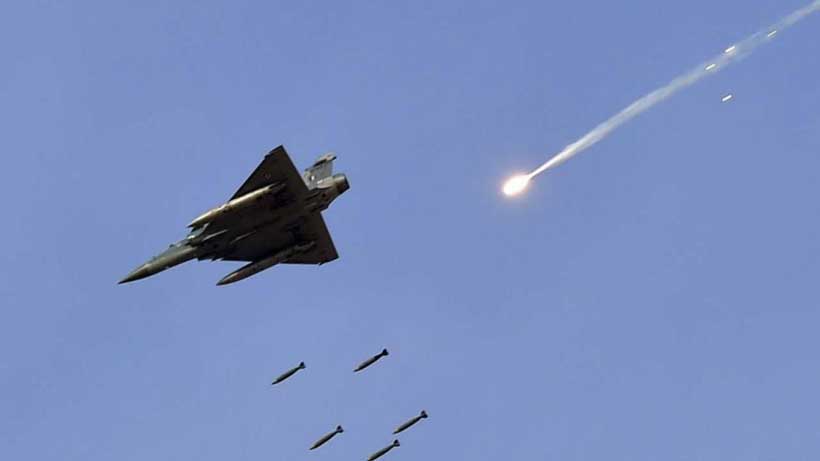This month marked the 5th anniversary of the Pulwama-Balakot Crisis and the 3rd anniversary of the Indo-Pak ceasefire agreement on the Line of Control (LoC).
While the Pulwama-Balakot Crisis brought the two nuclear-armed neighbors perilously close to a catastrophe, the Indo-Pak ceasefire agreement brought about a temporary end to violence on the most militarized boundary in the world. Unfortunately, neither the nuclear-tinged crisis nor the ceasefire agreement portends better days ahead for Indo-Pak relations.
This is not the first ceasefire agreement as both countries have made four attempts to achieve quiet along the LoC since 2000. The result of these efforts shows that while it does provide relief to civilians on both sides of the LoC, any ceasefire is unlikely to be sufficient to achieve enduring peace between the two countries.
These two incidents are significant aspects of the Indo-Pakistani relationship. In the short term, according to experts, we should not expect a breakthrough in relations between the two countries.
The border region connecting China, Pakistan, and India is one of the most complicated and unstable geopolitical areas in the world, characterized by ongoing territorial disputes stemming from historical conflicts, as well as contemporary military buildups.
What are the perceived threats? And what roles do the United States and Europe play in this region?
India’s Foreign Secretary Vikram Misri met Liu Jianchao, head of the International Department of the Communist Party of China Central Committee, in Beijing recently to discuss bilateral ties, including political and economic issues. Talks addressed the LAC dispute, people-to-people exchanges, and unresolved tensions following the Ladakh standoff.
In October 2024, India achieved a diplomatic win after it convinced China to return to the patrolling agreements along the Line of Actual Control (LAC) in eastern Ladakh that was in place before the Galwan clashes in April 2020.
Given both sides’ deployments and infrastructure improvements, the presence of troops only highlighted the prospect of military conflict.
There are conflicting claims of sovereignty because the LAC, which divides China’s and India’s borders, is not clearly defined in many places. What makes the LAC distinguishable from the LoC is that the former has a buffer zone.
The Indian and Chinese armies patrol their respective border maintaining a certain distance from each other. On the other hand, Indian and Pakistani forces are always face to face on either sides of the LoC.
Key disputes include the Aksai Chin region (controlled by China but claimed by India) and Arunachal Pradesh (administered by India but claimed by China as “South Tibet”).
In the meantime, tensions along the India-Pakistan border still exist in the Jammu and Kashmir region, where India administers most of the territory while Pakistan controls portions of it. Parts of the China-Pakistan Economic Corridor (CPEC) cross Indian-claimed territory, adding to the complexity of Pakistan’s expanding relations with China.
China’s control over Aksai Chin and Pakistan’s administration of Gilgit-Baltistan form part of their ongoing strategy to counterbalance what they perceive as India’s negative influence in South Asia.
On the flipside, India’s military expansion is shaped by what it perceives as dual threats from China and Pakistan.
Both India and China view their military buildups as necessary to protect their sovereignty, ensure regional dominance, and deter adversaries.
India has concerns about Chinese assertiveness along the LAC, including infrastructure projects and military patrols. India is also countering China’s influence in the Indian Ocean Region (IOR), where China is increasing its naval presence and close ties with Sri Lanka, Pakistan, and Myanmar.
At the same time, India is concerned about persistent cross-border terrorism and Pakistan’s use of militant proxies. For India, the possibility of a two-front war, with simultaneous pressure from China and Pakistan, remains a tangible threat.
For this reason, India is actively modernizing its armed forces with advanced weapons systems. It is also strengthening border infrastructure to support rapid troop deployment and expanding partnerships with the U.S., France, and Israel for defense technology and intelligence sharing.
Of course, China is not sitting by idly. Its military strategy is focused on reinforcing its position as a global power and securing its borders.
China views India’s growing partnerships with the U.S. (e.g., QUAD alliance) as an attempt to contain it, and India’s development of border infrastructure along the LAC challenges China’s territorial claims.
As part of its concerns, China is securing Tibet and Xinjiang by controlling disputed border regions, protecting its investments in South Asia and the Indian Ocean under the Belt and Road Initiative (BRI), and establishing military superiority in the South China Sea and beyond.
India’s rationale is to counter China’s growing influence in the region, deter Pakistan from engaging in asymmetric warfare, and assert itself as a regional and global power.
China’s aim is to secure its borders and territorial claims, safeguard its economic corridors and trade routes, maintain regional dominance, and challenge U.S.-led alliances.
All this points to the necessity of the United States and Europe to remain active in the region.
The U.S. and India have significantly strengthened security ties in recent years. Washington, which supports New Delhi as part of its Indo-Pacific Strategy to counter China, must continue to watch the region closely and maintain an active role.
Europe, particularly France and the UK, plays a secondary but significant role by selling arms to India. European nations are concerned about maintaining freedom of navigation in the Indo-Pacific and have occasionally supported India’s stance against Chinese aggression.
At the same time, Germany and other EU countries are advocating for de-escalation and a multilateral solution. The U.S. and Europe are key external players, and while they primarily support India to balance China’s rise, they must urge de-escalation. The region’s future depends on diplomacy, dialogue, and the careful management of tensions on each side.







